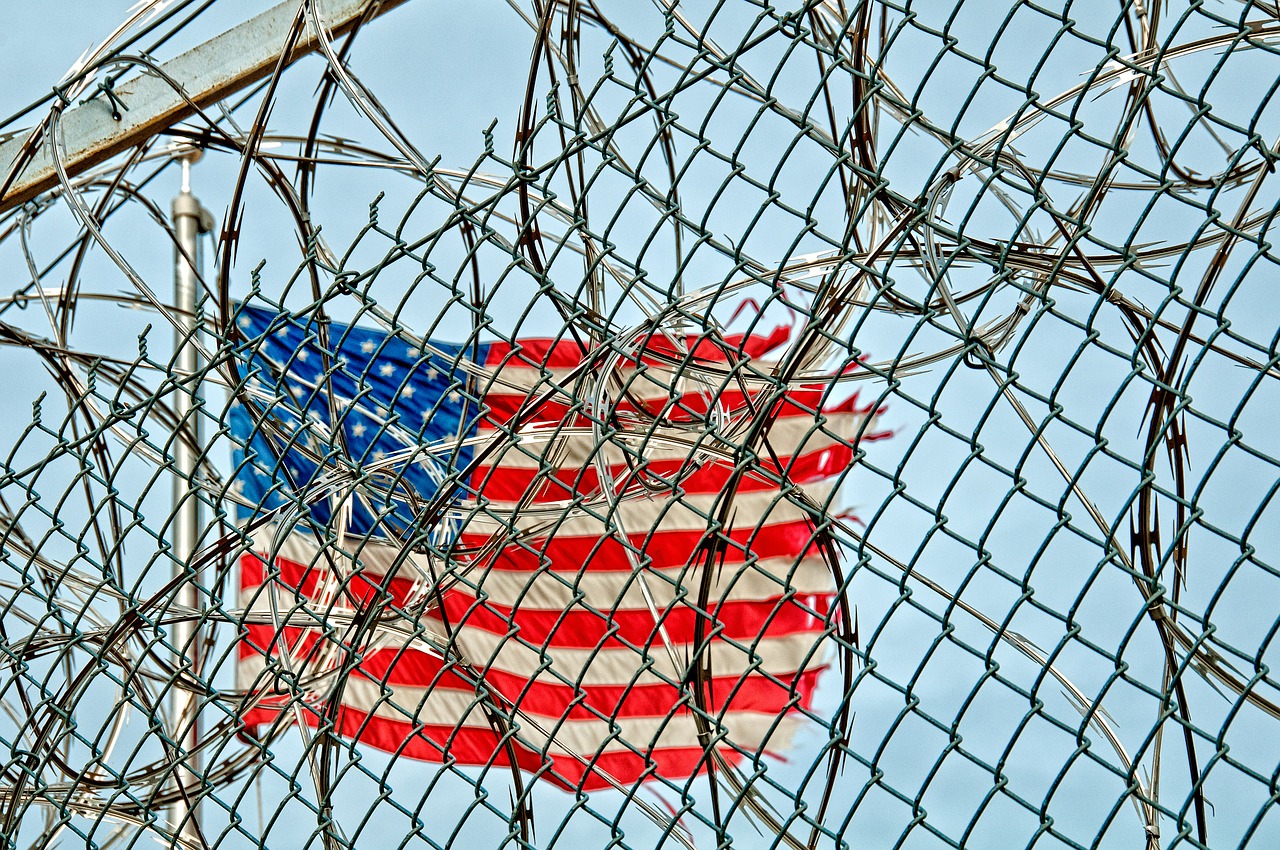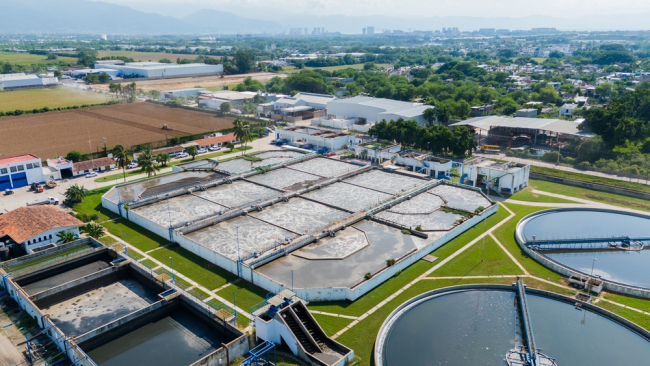Sentencing Reform in the United States
Since the 1980's the incarceration rate in the United States has climbed to unprecedened levels. Today, the United States incarcerates a higher proportion of its population than any other country in the world. Activists have long called for sentencing reform, recognizing the criminal justice system's racial bias and failure to rehabilitate. President Obama's recent call to action propelled the debate on the issue forward at an unprecedented pace but will proposed reforms be enough to end mass incarceration ?

The United States comprises five percent of the world’s population but accounts for over a quarter of its prisoners. It has the highest incarceration rate at 725 per 100,000 people, more than six-times the OECD average.[1] For reference, Russia and China incarcerate 463 and 119 people per 100,000 respectively.[2] Most alarming, however, are the criminal justice system’s racial disparities. Today, one third of African-American males can expect to be incarcerated at some point in their lifetime in contrast with a sixteenth of Hispanic men and just a one in seventeen White males.[3] These racial discrepancies have caught the attention of activists and lawmakers alike, as the debates over police brutality and the criminal justice system as a whole have intensified.
The discussion on mass incarceration has grown steadily over the past few years, but surged in July as President Obama granted clemency to 46 non-violent drug offenders, became the first president to visit a federal prison, and gave a groundbreaking speech on the issue. Meanwhile, Bill Clinton further pushed the issue by admitting that he regrets his administration’s role in furthering the practice in 1994. Since then, politicians on both sides of the aisle have committed to passing the sentencing reform that has been in the works for months. With such an unusual amount of bipartisan support, sentencing reform will likely pass. Will it solve the mass incarceration problem?
False Logic
Many “tough on crime” proponents feel that mass incarceration explains the decline in crime since its peak in the early 1990’s. However, scholars have repeatedly argued that such a strong link does not exist. Academics from a wide range of disciplines put forth a number of other factors that account, at least in part, for falling crime rates. These range from the legalization of abortion in 1973[4] to technologically advanced police practices. Although many influences likely play a role, prison policy experts Jenni Gainsborough and Marc Mauer make the most compelling argument. They explain imprisonment is subject to the Law of Diminishing Returns. In other words, increased incarceration rates reduced crime in the early 1990’s, shortly after the “tough on crime” laws came into effect, but the link between locking people up and reducing crime largely disappeared by the end of the decade. Today, some estimate that incarceration may have accounted for less than 1% of the crime decline from 2000-2013.[5]
Recent shifts in prison populations further support the conclusions that mass incarceration no longer plays an important role in crime reduction. Following the “tough on crime” logic, if a state decreases its prison population, its crime rate should go up. Over the past decade, fourteen states, spanning the political spectrum, have proven that this logic does not hold true. New York saw a 28% drop in crime despite decreasing its prison population by a quarter. Similarly, California, Maryland, New Jersey, New York, and Texas all saw both imprisonment rates and crime decline by more than 15%.
In many ways, mass incarceration fuels itself. Within the first five years after release, police re-arrest more than three quarters of former prisoners.[6] This recidivism rate greatly exceeds those in other industrialized countries. A recent study indicates that the likelihood of recidivism increases with each year a person spends behind bars. In fact, the link is so strong that it outweighs any advantages of mass incarcerating to keep known law-breakers off the streets. These results prove that removing people from the general population for extended periods of time does not actually reduce crime because it turns small-offenders into hardened career criminals. This stems from the fact that incarceration decimates earning potential and exposes people to new criminal skills and contacts.
Problems with Mass Incarceration
Each year, taxpayers spend over $260 billion on criminal justice including $31,286 on average per inmate. Such a large price tag has negative effects on how correctional facilities themselves function. The imprisoned population’s size makes extensive rehabilitative, job training and educational programs too expensive to offer across the system. Furthermore, rising incarceration rates led to overcrowding so horrific that in 2011 the United States Supreme Court demanded that California lower its prison population because the conditions constituted “cruel and unusual punishment,” a violation of the Constitution. Such an unconstructive and dangerous environment often takes a serious physical and psychological toll on prisoners, increasing the likelihood that ex-convicts will recidivate.
Beyond budget constraints, the United States incarcerates young African-American males at a rate high enough to cause a significant demographic effect. Enough young African-American men are incarcerated today to depress the marriage rate and damage outcomes for children in their communities. With a ninth of African-American men behind bars and one in three serving time at some point, the pool of marriageable men is much smaller than that of eligible women. As a result, the marriage rate among Black women age 30-44 has plunged from 62% to 33% since 1970.[7]
Activists emphasize that incarceration not only destroys the lives prisoners, but their children as well. One in twenty-eight American children under the age of 18 has a parent in prison while that statistic jumps to one in nine in the African-American community. Parental incarceration forces 14,000 children into the Foster Care system annually.[8] Moreover, it often leads to increase physical, psychological and behavioral problems.[9]
The problems for children with an incarcerated parent don’t end with the prison sentence. Many states limit access to welfare programs for convicted felons, therefore limiting children’s access to important resources or complete family reunification. For example, many cities deny ex-convicts the right to live with family benefiting from public housing. Furthermore, 38 states limit ex-offenders’ access to either cash assistance or food stamp benefits and in doing so inhibit them from using such benefits to provide for their children.[10] These conditions merely reinforce the cycle of poverty and the “school-to-prison pipeline”.
A Refreshing Example of Bipartisanship
If there is one major issue on which Republicans and Democrats agree, it is sentencing reform. In today’s era of political gridlock, it provides a refreshing example of bipartisanship. Proponents include fiscal conservatives, libertarians and liberals in an unusual coalition held together by a common goal despite differing motivations. This widespread coalition makes sentencing reform an achievable goal. Speaker John Boehner has already voiced his support for the bill and announced his plans to bring it to the floor in the House of Representatives.
For decades, conservatives touted the “tough on crime” attitude by promoting the idea that simply increasing incarceration would lower crime rates by taking law-breakers off the streets and strengthening disincentives. However, budgetary constraints have encouraged many to reconsider this strategy. In contrast, liberals and libertarians see mass incarceration as not simply a budgetary issue but a question of fairness. They point to the justice system’s racial discrepancies, excessively punitive sentences, and denial of voting rights as some of today’s leading civil rights issues.
The SAFE Justice Act, a bill that aims to address mass incarceration, is expected to reach the House floor for a vote after the summer legislative recess. Although nobody knows exactly how much the bill will shrink the prison population, it is expected to be the largest effort thus far. It proposes shorter sentences for drug crimes and would dramatically lower the number of people sentenced using mandatory minimums while expanding the use of probation as an alternative to incarceration. These reforms would give judges much more leeway with regard to sentencing. It would not however eliminate mandatory minimums altogether, nor would it influence the controversial “three-strike laws”.
Too Little Too Late
Piecemeal legislation cannot end mass incarceration. Even if the United States were to release all drug offenders at the state and federal level, it would still have the highest incarceration rate in the world at 625 per 100,000 people; more than five times the OECD average. Rather, the issue is far more complex and as such will necessitate much more comprehensive reforms than what President Obama and Congress propose. Ending mass incarceration would require sentencing reform beyond drug violations and a commitment to reducing recidivism through appropriate reentry support and employment opportunities.
Despite the President’s stated commitment to sentencing reform, he has not taken all the steps within his arsenal to rectify the situation. He recently granted clemency to 46 non-violent drug offenders bringing the total from his time in office to 89. Although this is more than his recent predecessors, it is a number far too small to make a measurable difference. Recognizing that unemployment drives up recidivism, many advocate prohibiting employers from using hiring practices that discriminate based on criminal record. Obama has the authority to prevent government agencies and contractors from using such methods but has elected not to do so. If Obama is serious about ending mass incarceration and giving people second chances, he will address such things that are within his power to change at the governmental level.
Surging Ahead
Sentencing reform’s most important impact may not be concrete or quantifiable. It represents a shift away from the “tough on crime” attitudes that have dominated criminal justice discourse since the 1980’s. Changing attitudes is the first step toward re-embracing a rehabilitative prison model and ultimately decreasing both the incarceration rate and recidivism. Successful prison reform on the federal level could trickle down to states and counties and in doing so give the United States a puncher’s chance at ending mass incarceration.
In order to make meaningful strides toward lowering the incarceration rate, lawmakers must commit to setting ex-convicts up for success. The current model continues to punish prisoners long after their release by denying them access to important government resources and creating hurdles to gainful employment. Only by removing these barriers to success and replacing them with reentry support can the government lower recidivism and demonstrate a commitment to ending mass incarceration. Governments at all levels must also invest money and resources in substance abuse and mental health treatment in order to give people the help they need to reenter society without exacerbating existing problems.
Although congress may move quickly to pass the SAFE Justice Act, the racial disparities within the Criminal Justice system will take much longer to address. Sentencing reform is not the be-all and end-all. Rather it marks the beginning of a larger struggle for reasonable criminal justice policies.
[1] http://www.brookings.edu/research/reports/2014/05/10-crime-facts
[2] http://fivethirtyeight.com/datalab/releasing-drug-offenders-wont-end-mass-incarceration/
[3]http://sentencingproject.org/doc/publications/rd_ICCPR%20Race%20and%20Justice%20Shadow%20Report.pdf
[4] http://freakonomics.com/2005/05/15/abortion-and-crime-who-should-you-believe/
[5] http://www.theatlantic.com/features/archive/2015/02/the-many-causes-of-americas-decline-in-crime/385364/
[6] http://www.nij.gov/topics/corrections/recidivism/pages/welcome.aspx
[7] http://www.economist.com/node/15867956
[8] http://www.theguardian.com/commentisfree/2013/aug/19/mass-incarceration-injustice-american-children
[9] http://scholarlycommons.law.northwestern.edu/cgi/viewcontent.cgi?article=7484&context=jclc
[10] http://sentencingproject.org/doc/publications/cc_A%20Lifetime%20of%20Punishment.pdf

Available in:
Regions and themes
Share
Related centers and programs
Discover our other research centers and programsFind out more
Discover all our analysesWater in Mexico: an Emergency that Will Wait
Access to water is already and will become increasingly problematic for Mexican economic actors due to the progressive scarcity of the resource resulting from climate change, a geographical distribution that does not coincide with that of the population or economic activity, and management that has so far been far too lax.
Donald Trump v. the States: the Case of New York
While the disruptive policies of the second Trump administration are being implemented at the federal level and on the international stage, they are also being felt in the federal states and major cities across the country. In the spring of 2025, several cases involving the state and city of New York demonstrate that the president’s attacks on environmental protection, the separation of powers, freedom of speech, etc., are also being carried out at the local level.
How the US under Trump Became a Strategic and Ideological Adversary of Europe
The Europeans' worst security nightmare seems to be coming true: on Tuesday, February 18, 2025, U.S. Secretary of State Marco Rubio and Russian Foreign Minister Sergey Lavrov met in Saudi Arabia to initiate the normalization of relations between their two countries. The meeting also aimed to set up peace negotiations for Ukraine. However, despite having the potential to affect the entire continent, the discussions took place without the Europeans or the Ukrainians being present.
Will Trumpian Authoritarianism Lead to a Constitutional Crisis?
Since his return to the White House on January 20, 2025, President Donald Trump has signed around sixty executive orders to implement his political agenda. Numerous other measures have also been introduced by the White House and the new Department of Government Efficiency (DOGE) as part of these orders.








